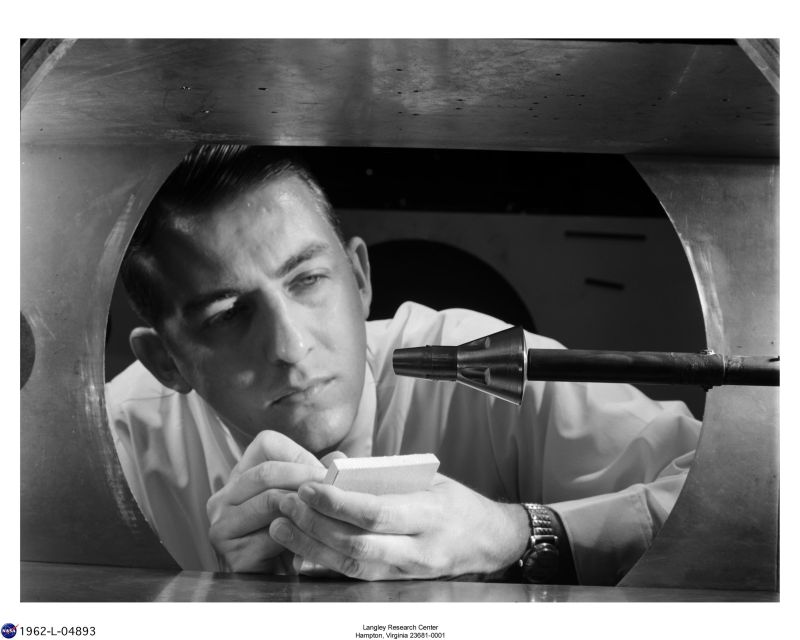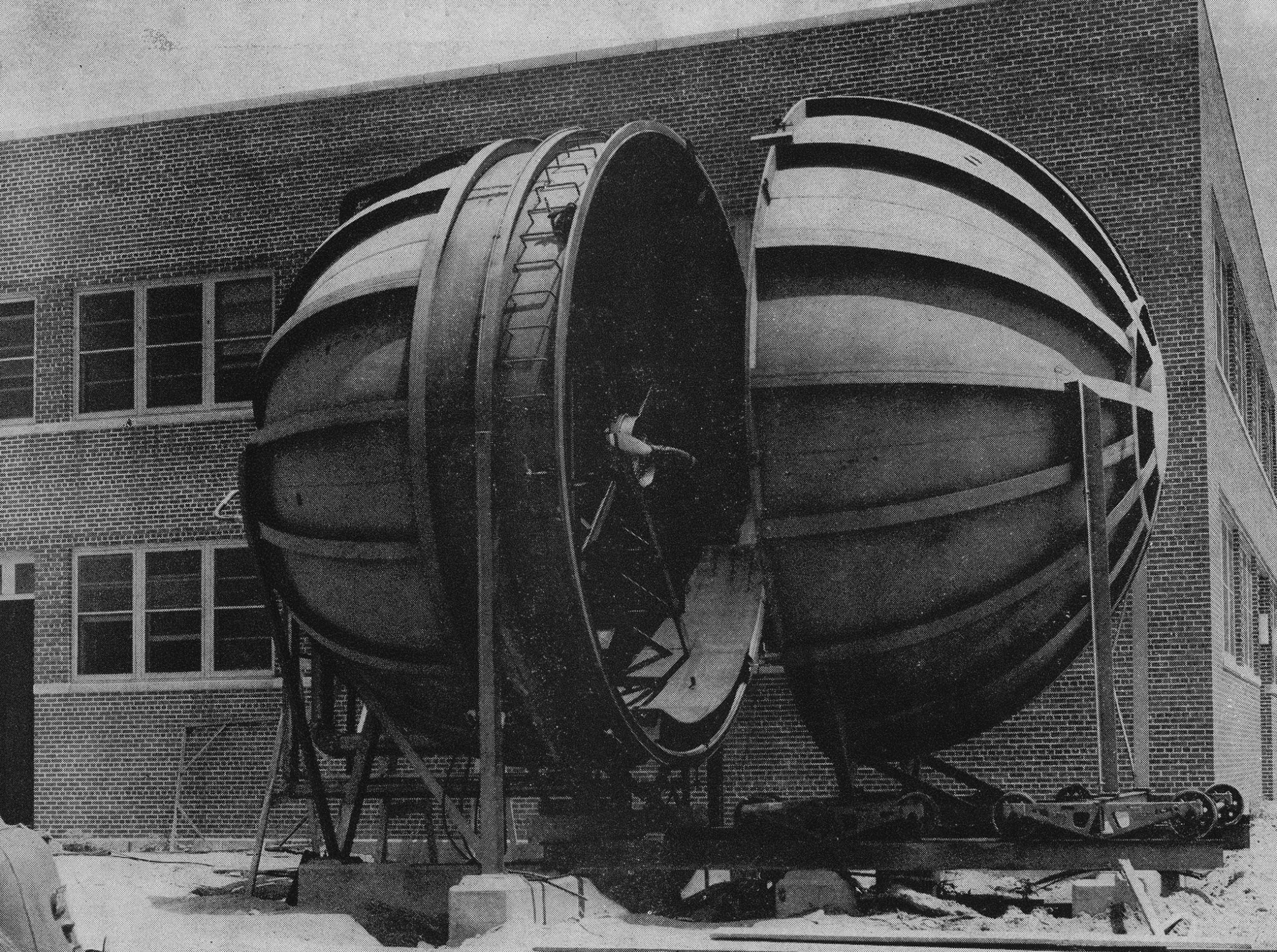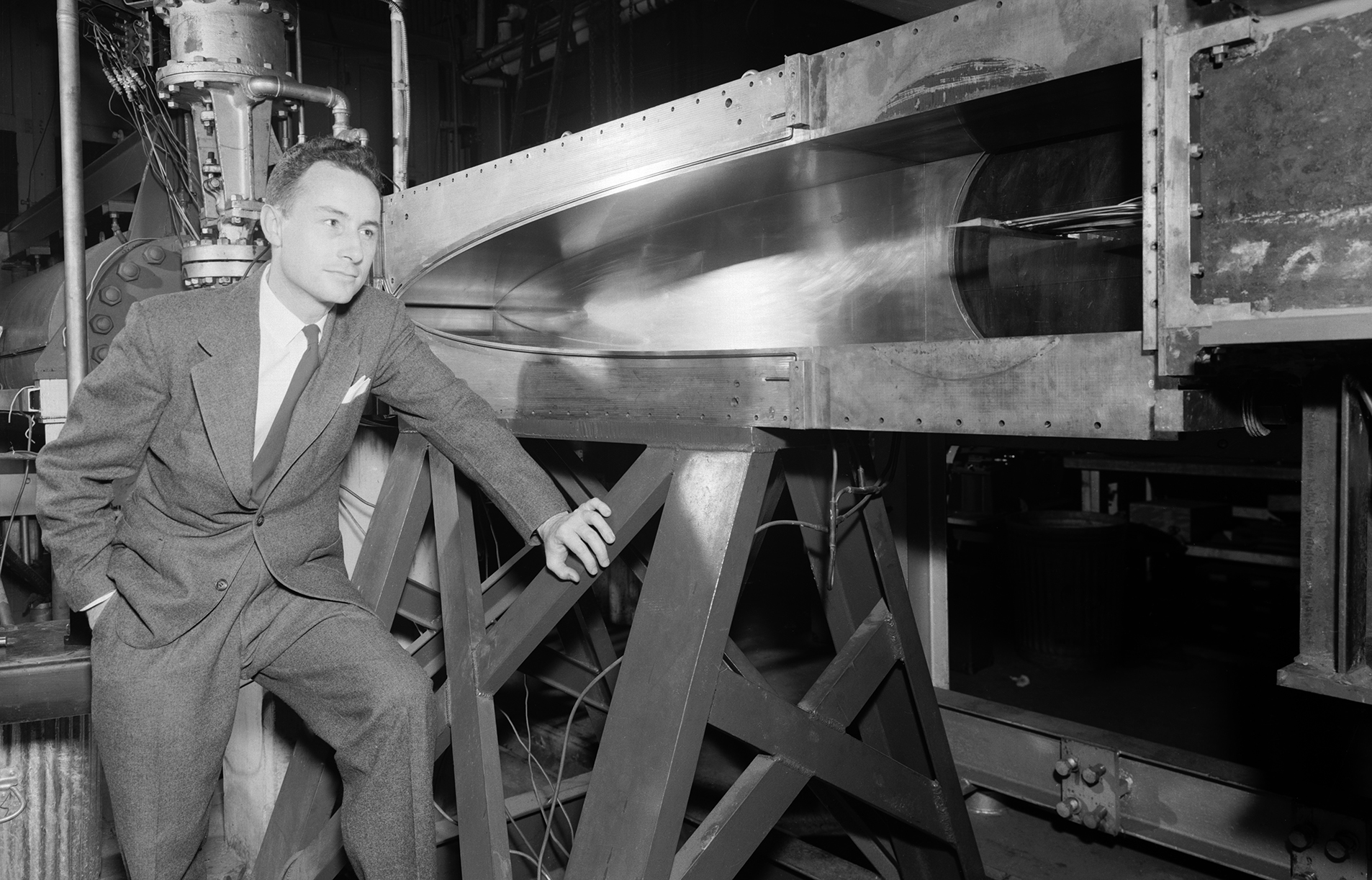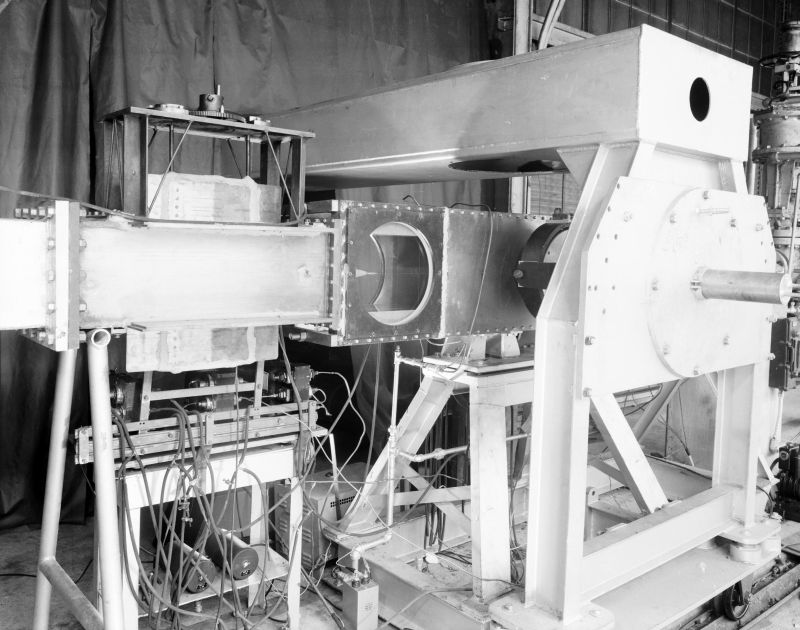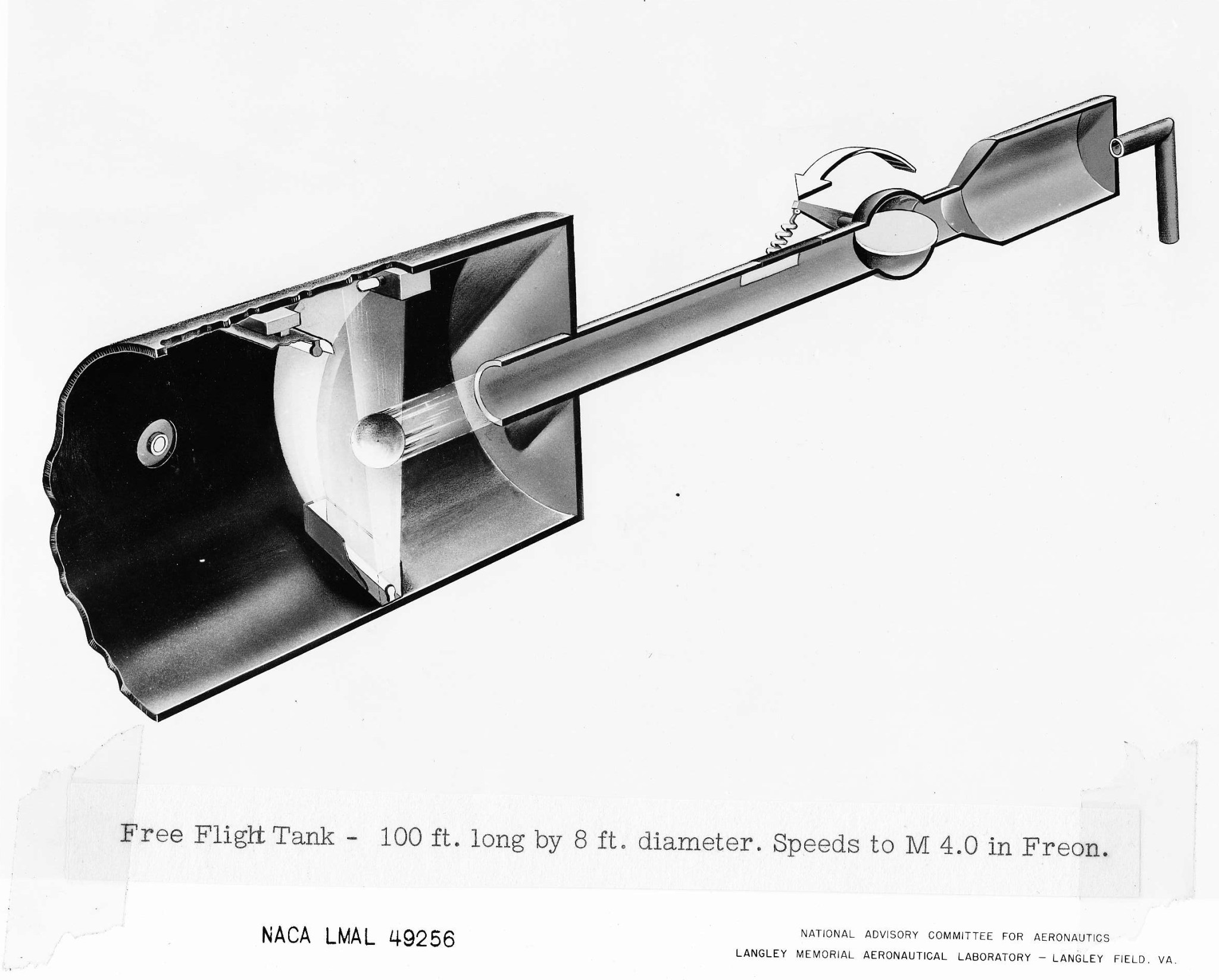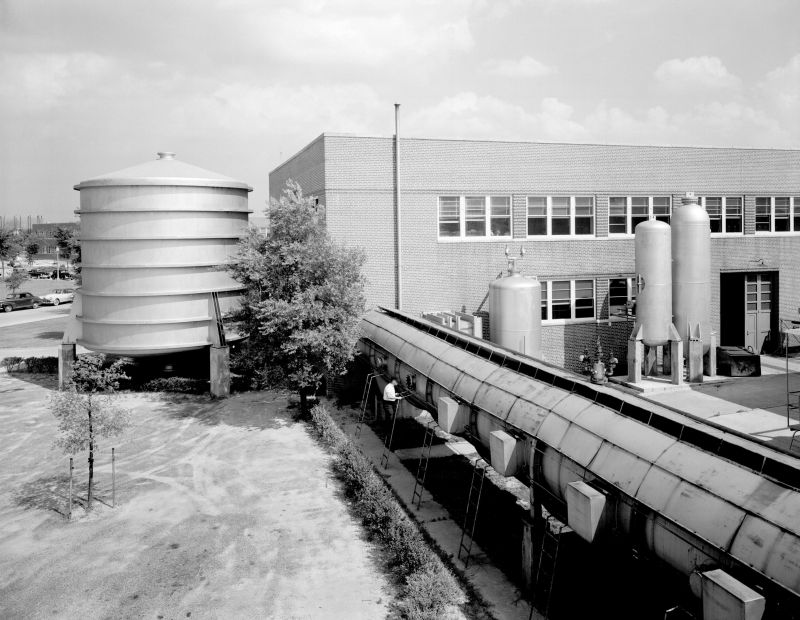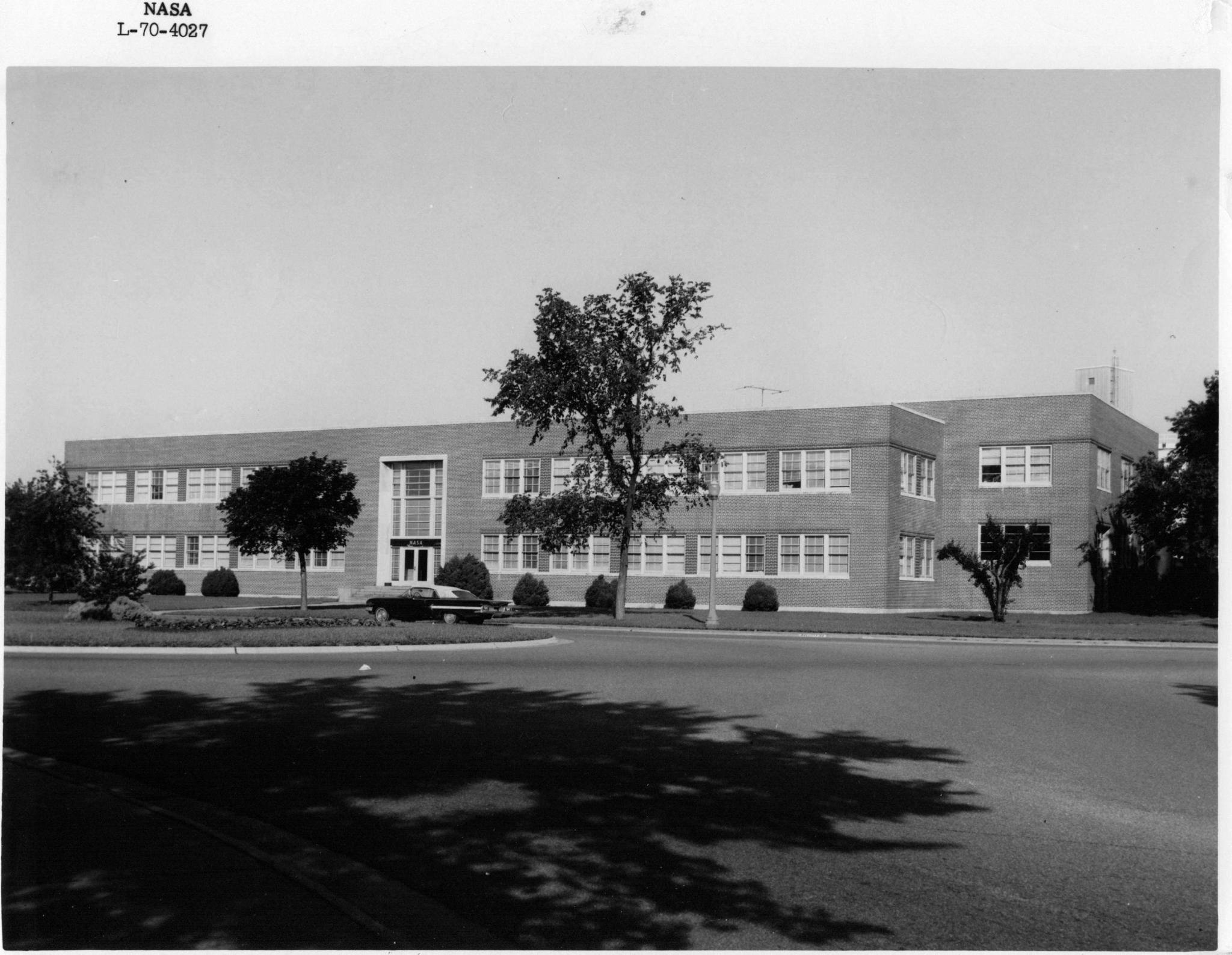Quick Facts
Year Built: 1945
Historic Eligibility: National Register Eligible
Important Tests: Blowdown Tunnel Development, X-15 Hypersonic Research
Physical Research Division
Building 1229 in the NASA West Area was the site of extensive aerospace research since its construction in April 1945. Building 1229 resulted from management interests in centralizing researchers conducting fundamental physical research, including experimental and computational efforts in aerodynamics and structures.
History
The first chief of the Physical Research Division (PRD) was the brilliant Langley physicist Theodore Theodorsen. Well-versed in theoretical issues such as the theoretical generation of wing sections, aerodynamics of propellers and fundamentals of flutter, he had begun his career as a member of the Atmospheric Wind Tunnel (AWT) in 1929. Recognized for his superior understanding of fundamentals, he became head of PRD when it was created in the East Area in 1931.
In 1945, when the PRD relocated to its new West Area quarters in Building 1229, Theodorsen stimulated the development of several unique facilities in and near the building for fundamental research. Typical problems researched by PRD included high-speed flutter, propeller flow theory, compressible flow theory, boundary-layer mechanics and helicopter vibration. The organization was the first to use Freon 12 in aerodynamic experiments. Theodorsen left Langley in March 1949.
Supersonic Sphere
One of Theodorsen’s many areas of interest was propeller flutter and the development of theoretical methods to predict the phenomenon. In the early 1930s, a special capsule-shaped sphere was constructed to test propellers and airfoil shapes. Essentially a whirling mechanism enclosed in a steel shell that could be sealed from the atmosphere, the apparatus was first used in tests near the Langley Full-Scale Tunnel in the mid-1930s and appears in photographs of that era.
After the Physical Research Laboratory was constructed in the West Area in 1945, the testing apparatus was moved to a site immediately behind Building 1229 and became known as the Langley Supersonic Sphere. It was used initially for the study of airflow characteristics in Freon, since the power requirements and instrumentation costs were much less than for a large supersonic wind tunnel. During these tests the sphere was filled with either air or Freon 12 gas at pressures necessary for the testing conditions.
Potential Flow Tank
A single document has been found for this test apparatus. Electrical current in a water-filled tank was fitted with copper plates used to measure electrical currents around models of insulating material to measure fluid flow over 3-D bodies. The tank went into operation in 1946. It is not known when it was dismantled.
11-Inch Hypersonic Tunnel
One of the most important wind tunnels conceived and developed at Langley was the 11-inch Hypersonic Tunnel, used in pioneering efforts in critical hypersonic aerodynamics research for the nation’s high-speed aerospace programs. Designed and managed by John V. Becker and Charles H. McLellan, the tunnel was inspired by post-war inspections of German facilities used in the development of the V-2 rockets.
Becker’s enthusiasm and dedication coincided with accelerated interests by the NACA and the military in hypersonic aerodynamics. Proposed as a pilot facility for hypersonic testing, the tunnel was first operational in 1947 in the building previously occupied by the Langley Propeller Research Tunnel in the East Area. Arguably, one of the most valuable lessons learned from this facility was that “blowdown,” or intermittently operated hypersonic tunnels, could be used for meaningful research with relatively low cost compared to continuously run tunnels.
After a period of great success in fundamental hypersonic experiments, the facility and its associated pressure and vacuum tanks were moved to the West Area in 1949 and located in Building 1229. The test section of the tunnel was located on the first floor in the area previously occupied by the free-flight apparatus control room. The Langley 11-Inch Hypersonic Tunnel contributed critical data in the development of the X-15 hypersonic research aircraft and numerous generic research projects.
It remained operational until 1973 when it was dismantled and later given to the Virginia Polytechnic Institute in Blacksburg, Va.
Supersonic Free-Flight Apparatus
One of the more unique facilities developed under the PRD was a ballistic-type free-flight apparatus for the study of dynamic motions and performance of aerospace vehicles flying freely at supersonic speeds.
Constructed on the right-rear corner of Building 1229, the free-flight apparatus was 100-feet long with a diameter of eight feet. Data obtained from the test included lift, drag and stability of bodies propelled from a compressed-gas gun at velocities between 500 and 1,000 mph in a test made of air, Freon 12 or mixtures. A series of viewing ports were located for observation of the model’s trajectory along the length of the apparatus.
The free-flight apparatus appears in photographs and building drawings of Building 1229 in about 1948 and is mentioned in the annual NACA report of 1948. Unfortunately, to date no formal research reports have been discovered regarding technical results obtained in the apparatus.
Reportedly, the aerodynamic flow quality within the apparatus was unsuitable for reliable measurements. In 1949, the apparatus was used in the evaluation of nose jettisoning as a means of pilot escape during high-speed flight. Dynamic stability characteristics of aircraft nose shapes were determined at a Mach number of 1.2 in support of a project conducted by the Langley Spin-Tunnel Section.
Immediately after it became operational, the free-flight apparatus was dismantled at the direction of Langley’s legendary leader John P. Stack. Stack wanted the new hypersonic pilot tunnel moved from the East Area to the West Area, and Building 1229 was selected as the new site for the tunnel. Accordingly, the free-flight concept was terminated and the facility was demolished.
West Area Library
The technical library of the NACA Langley Memorial Aeronautical Laboratory was initially located in the Service Building (586) located behind the NACA Headquarters Building (587) in the East Area.
As construction of facilities and staffing of the West Area rapidly accelerated in the 1940s, Langley opened a West Area library in a large room on the second floor of Building 1229. The East Area library provided services for all NACA centers, but the West Area library served only Langley. Subsequently, the West Area library services were moved from Building 1229 to a second-floor room in the West Area hangar (Building 1244). The library has been relocated several additional times.
Dynamic Loads Division
The management and senior staff of the Dynamic Loads Division moved into Building 1229 in 1949 where it quickly became internationally recognized for leadership in many aero-structural areas.
Some of its accomplishments included: leadership of Langley’s flutter research; pioneering efforts on the dynamics of fluids in tanks used by liquid-propelled rockets; major contributions to research on mechanical instabilities of rotary-wing aircraft; conception and design of the Langley Dynamics Research Laboratory (Building 1261); design, construction and dynamic testing of a large model of the Saturn V rocket; design of a simulator for vehicle dynamic impact testing for various planets; anticipation and analysis of erosion and visibility problems for landing on the moon; and management of work at the Langley Landing Loads Track.
In addition to its focus on dynamic loads and structures, the organization also initiated work on the generation of noise by aircraft (see Harvey H. Hubbard), resulting in the spin-off of Langley’s Acoustics Division which subsequently moved into Building 1208.
National Transonic Facility Aerodynamics Branch
During the early 1980s, while the National Transonic Facility was being built and brought online, its staff were temporarily located in offices in Building 1229. Once the NTF became operational, they were relocated to the NTF, Building 1236.
Administrative Office Use
Building 1229 was then occupied by over 125 people involved in diverse research, administrative and planning activities in support of Langley’s mission. The majority of personnel in Building 1229 were associated with management and maintenance of current and future Langley buildings and facilities.
Other occupants of the building were remotely located from organizations located elsewhere at the center. Organizations included the Independent Program Assessment Office, which served the Agency as a nonpartisan review resource for assessments of potential programs and ongoing projects. The Ground Facilities and Testing Directorate provided management and oversight for operation and scheduling of Langley’s wind tunnels and other ground-based facilities. The Projects and Engineering Branch supported major research projects with engineering expertise and associated knowledge.
Building 1229 was abandoned and closed in 2012. Demolition began in the fall of 2013 and was completed in February 2014.
Search the NASA Technical Reports Server for additional information, including these examples:
- Experimental investigation of flutter of a propeller with Clark Y section operating at zero forward velocity at positive and negative blade- angle settings – NASA Technical Reports Server (NTRS)
- Investigation of a Two-step Nozzle in the Langley 11-inch Hypersonic Tunnel – NASA Technical Reports Server (NTRS)
Related Materials
Transcript of Oral History Interview with Jim A. Penland
1965 11-Inch Hypersonic Tunnel Description
1974 Floorplan
Langley Memorial Aeronautical Laboratory Description of the Physical Research Laboratory




























